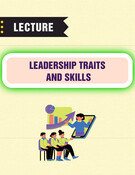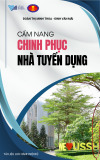
* Corresponding author
E-mail address: linhnp@neu.edu.vn (T. P. L. Nguyen)
© 2019 by the authors; licensee Growing Science.
doi: 10.5267/j.uscm.2019.5.001
Uncertain Supply Chain Management 7 (2019) 619–634
Contents lists available at GrowingScience
Uncertain Supply Chain Management
homepage: www.GrowingScience.com/uscm
Knowledge sharing and innovative work behavior: The case of Vietnam
Thi Phuong Linh Nguyena*, Ke Nghia Nguyena, Thi Dong Doa and Thi Tuyet Mai Nguyena
aNational Economics University, Vietnam
C H R O N I C L E A B S T R A C T
Article history:
Received April 14, 2019
Received in revised format May
10, 2019
Accepted May 10 2019
Available online
May 11 2019
Employees’ knowledge sharing and innovative work behavior play an important role for the
development of Vietnam telecommunication enterprises. Knowledge sharing along with two
central processes; namely knowledge donation and collection, fosters employees’ innovative
work behavior of Vietnam telecommunication enterprises. Based on a sample size survey of
396 Vietnam telecommunication employees and exploration factor analysis (EFA),
confirmatory factor analysis (CFA) and structural equation modeling (SEM), the study
determines factors such as trust, enjoyment in helping others, knowledge self-efficacy,
management support, using information and communication technology significantly influence
knowledge donation and collection. At the same time, knowledge donation and collection have
positive impacts on employees’ innovative work behavior of Vietnam telecommunication
enterprises. Finally, several suggestions for enhancing employees’ knowledge sharing and
innovative work behavior of Vietnam telecommunication enterprises managers are given.
., Canada
by
the authors; licensee Growin
g
Science2019 ©
Keywords:
Knowledge sharing
Knowledge donation
Knowledge collection
Innovative work behavior
1. Introduction
As the world is gradually moving towards a knowledge economy, knowledge is increasingly regarded as
the main driving force of the economy. The success of future economies will be based on effective
organizations absorbing, using and enhancing knowledge (Nassuora, 2011). However, most organizations
tend to emphasize too many systems and tools rather than the core component of sharing knowledge among
individuals. Knowledge sharing is valuable for organizations because through organizational knowledge
sharing it is possible to improve efficiency, avoid waste, reduce training costs and risks. The study by Smith
and Mckeen (2003) show that readiness to share knowledge is associated with profitability and productivity
as well as labor costs. Besides, knowledge sharing is a factor that encourages individuals to create
knowledge and convert it into greater power (Liebowitz & Chen, 2001). Knowledge sharing with colleagues
allows individuals to exchange and discuss ideas with peers, draw their attention to the benefits of ideas and
implement ideas by turning into a viable solution (Mura et al., 2013). When employees actively share
knowledge, knowledge is acquired and facilitates lawsuits that promote employees' innovative work
behavior. In recent years, while Vietnam's telecommunications market has been saturated, many traditional
services are at risk of decline, the spreading power of the industrial revolution 4.0 is getting faster and

620
stronger with rapid changes. Telecommunication is one of the fastest growing industries with the beginning
of CDMA technology, followed by 2G, then 3G, 4G and by 2018 was the era of 5G technology. In this
context, Vietnam telecommunication enterprises, play the role of infrastructure for socio-economic
development and need to promote innovation and develop technology to catch up and effectively exploit
the great opportunities that this revolution brings. Most knowledge-sharing studies are concentrated in
Western countries because the theory of knowledge sharing is mainly developed in those regions (Ma Prieto
& Pilar Pérez-Santana, 2014) and the studies of knowledge sharing in eastern countries have not been
explored, significantly. Meanwhile, globalization creates a wide range of competition, knowledge sharing
is therefore also meaningful for business organizations in developing countries (Burke, 2011). In particular,
telecommunication is one of the service industries that requires a high level of knowledge sharing among
employees (Akram et al., 2017) because this is a highly demanded industry for workers about knowledge,
skills and experience. Understanding technical, programming, software, communication, system and other
issues helps the employees of telecommunication enterprises develop in depth. Knowledge needs to be
shared so that each individual can comprehend and apply to the work, thereby implementing the act of
innovation to bring operational efficiency for the organization.
To fill this gap, this study develops a research model to link knowledge sharing enablers, processes and
innovative work behavior. The study examines the influence of different factors including trust,
enjoyment in helping others, knowledge self-efficacy, management support, using information and
communication technology on knowledge sharing processes and whether these factors lead to
innovative work behavior of Vietnam telecommunication enterprises employees. Based on a survey of
396 employees from 30 enterprises in Vietnam, the study applies structural equation modeling (SEM)
to investigate the research model, to examine the hypotheses and to provide solutions for Vietnam
telecommunication enterprises managers.
2. Research model and hypotheses
2.1. Knowledge sharing
Knowledge sharing involves different individuals at different levels in the organization; sharing
between individuals or between individuals and a group of people. This process assumes that at least
two parties are involved: one side conveys or distributes knowledge while the other side acquires and
collects knowledge (Van den Hooff & de Ridder, 2004; Vithessonthi, 2008). Weggeman (2000) and
Van der Rijt (2002) also studied the difference between these two processes, in which: knowledge
donation was shared with others and knowledge collection was to consult with colleagues to share their
own intellectual capital. Van den Hooff and de Ridder (2004) defined knowledge sharing as the process
by which individuals exchange knowledge (both tacit and explicit knowledge) together and create new
knowledge together. Van den Hooff and de Ridder (2004) separated knowledge sharing into two
processes of knowledge donation and collection when individuals exchange knowledge with each
other. This view was inherited by Van den Hooff and de Ridder (2004) from the previous three studies
of Weggeman (2000) that distinguished between donors and recipients in the process of knowledge
sharing; Oldenkamp (2001) discussed how knowledge sharing relates to people with knowledge and
recipients wish to learn knowledge; Ardichvili et al. (2003) with the view that knowledge sharing
included the provision of new knowledge and the demand for new knowledge.
The factors that may affect these two processes are described in details as follows:
Trust
According to Homans (1958), social exchange theory suggests that individuals exchange resources
through social exchange relationships. Social exchange is characterized by unspecified personal
obligations, internal rewards and trust (Blau, 1964). According to Bandura (1989), social cognitive
theory argued that individuals build and form trust before sharing their knowledge so without trust they
will not share. Trust is defined as the extent to which an employee believes that knowledge sharing will
benefit them and they will not be exploited by any party in the organization (Riege, 2005; Jones &

T. P. L. Nguyen et al. /Uncertain Supply Chain Management 7 (2019)
621
George, 1998). Trust in an organization improves connectivity between members and is seen as the
center of all organizational relationships (Dyer & Singh, 1998). Individuals feel encouraged to share
knowledge when they find a trust in the relationship between recipients and sharers (Okyere-Kwakye
et al., 2012). Ford and Chan (2003) argued that trust is one of the most important factors that promotes
the process of sharing knowledge successfully. Huang et al. (2008) found that individuals in many cases
and situations tend to hide the knowledge which they have if they are unsure of the outcome of sharing,
so building trust at work is the first step to share knowledge, effectively. Therefore,
H1. Trust positively influences employee willingness to both (a) donate and (b) collect knowledge.
Fig. 1. Research Model
Enjoyment in helping others
Self-deterministic theory (Deci & Ryan, 2008) determines each individual's intrinsic motivation derives
from an individual's inner self and is not related to external pressure. The enjoyment in helping others
is a form of autonomy determined by the sense of pleasure involved in an activity and doing that
activity. Enjoyment in helping others is rooted in the concept of altruism, in contrast to selfishness,
which is belief in impartial action and non-profit interest in the interests of others (Lin, 2007). Osterloh
and Frey (2000) argued that knowledge sharing is motivated by the intrinsic motivations of the person
sharing. Wasko and Faraj (2005) also demonstrated that individuals are intrinsically motivated to
contribute knowledge because they like to help others. Altruism can promote an individual's sharing of
knowledge with others without regard to the benefits received (Al-Qadhi et al., 2015). Therefore,
H2. Enjoyment in helping others positively influences employee willingness to both (a) donate and (b)
collect knowledge.
Knowledge self-efficacy
Social cognitive theory (Bandura, 1997) argues that knowledge self-efficacy has an impact on the
ability to organize certain behaviors so people can develop knowledge self-efficacy to exchange their
knowledge during the cooperation. The theory of self-determination (Deci & Ryan, 2008) describes the
need for competence as a need to feel confident, know exactly what is done and be able to do it yourself.
Self-knowledge is an individual's knowledge that can help solve work-related problems (Luthans,
Trust
Enjoyment in
helping others
Knowledge
self-efficacy
Management
support
Using
information and
communication
technology
Knowledge
donation
Knowledge
collection
Innovative work
behavior

622
2002); therefore, it is a form of capacity that has been shown to influence knowledge sharing. When
employees think their expertise can improve work efficiency and increase productivity, their attitude
towards knowledge sharing will be changed and as a result they will be more inclined to share
knowledge with others (Shin et al., 2007). Knowledge self-efficacy can encourage employees to share
knowledge with others (Wasko & Faraj, 2005). Many researchers have shown that the more confident
employees are with their intellectual capital, the more willing they are to share knowledge to fulfill
specific responsibilities (Constant et al., 1994). Self-control of knowledge makes work effective and
helps to resolve work-related obstacles (Luthans, 2002). Therefore, some hypotheses are proposed as
follows:
H3. Knowledge self-efficacy positively influences employee willingness to both (a) donate and (b)
collect knowledge.
Management support
Self-determination theory (Deci & Ryan, 2008) and motivation theory also determine the impact of
external motivation on individual behavior and argue that external motivation stems from external
pressure (Olatokun & Nwafor, 2012). Therefore, external motivation to promote an act of sharing
knowledge and external actors can be the management support, rewards, etc. The active participation
in sharing knowledge of workers depends on the support of managers in the organization (Al-Qadhi et
al., 2015). Management support is seen as an important factor influencing knowledge sharing among
employees (Lee et al., 2006). Islam et al. (2014) emphasized the role of management support for
knowledge sharing: leaders contribute to employees’ learning from personal experience, persuade
employees to transfer assigning knowledge to form new knowledge. Thus,
H4. Management support positively influences employee willingness to both (a) donate and (b) collect
knowledge.
Using information and communication technology
The technology acceptance model (TAM) argues that the use of technology in regular activities,
interactions and communication between individuals or members of a group or society affects behavior
as sharing knowledge. By improving access to knowledge and eliminating obstacles in space and time
between knowledge workers, information and communication technology (ICT) can improve the level
of knowledge sharing (Hendriks, 1999). Information and communication technology and its ability to
spread knowledge across different units of an organization can enable better comprehension in complex
organizational environments (Coakes, 2006). Information technology is also seen as an indispensable
tool to support the discovery of useful knowledge (Ho et al., 2012). Collaboration tools such as intranet
systems allow people to work together and coordinate interaction. Each individual's knowledge,
therefore, is transformed into organizational knowledge through the support of information technology
(Zhao & Luo, 2005). Teece (1998) shared that information and communication technologies reduce
barriers to knowledge sharing. Therefore, it is important to identify relevant knowledge in different
places of an organization to build a technical infrastructure to support and disseminate knowledge.
Since then, the author proposes the following hypotheses:
H5. Using information and communication technology positively influences employee willingness to
both (a) donate and (b) collect knowledge.
2.2. Knowledge sharing and innovative work behavior
Innovative work behavior is defined as the behavior of employees to create, introduce and apply new
ideas intentionally at work, a group or an organization that contributes to performance (Janssen, 2000).
This behavior is intentional behavior of individuals to create and implement new and useful ideas to
benefit individuals, groups or organizations (Bos-Nehles, 2017). It is also a process for creating new
problem-solving applications that begin with problem identification, finding and implementing

T. P. L. Nguyen et al. /Uncertain Supply Chain Management 7 (2019)
623
organizational solutions (Turgut & Beğenirbaş, 2013). Âmo and Kolvereid (2005) defined innovative
work behavior as the ability to actively work to produce new products; find new markets, new processes
and new combinations. The theory of knowledge creation relates to learn how knowledge is generated
from individuals, organizations and environments (Nonaka & Takeuchi, 1995). The creative theory of
knowledge emphasizes interpersonal interaction to form new knowledge, which is the basis for the
relationship between innovative work behavior and knowledge sharing. At the same time, previous
researchers such as Radaelli et al. (2014), Akhavan et al. (2015), Jaberi (2016), Phung et al. (2017),
Akram et al. (2018) affirmed in their studies the relationship between knowledge donation and
collection with the act of innovation. Therefore, the hypotheses are proposed as follows:
H6. Knowledge donation and collection positively influence the employee’s innovative work behavior.
3. Research methodology
Data collection
We conducted in-depth interviews with 10 employees of Vietnam telecommunication enterprises in the
city of Hanoi, Da Nang, Ho Chi Minh to evaluate and adjust the questionnaire, and clarify the
perceptions regarding two processes of knowledge sharing and innovative work behavior. The
questions in the in-depth interview focused on the following issues: knowledge sharing conditions,
knowledge sharing content, factors affecting the process of knowledge donation, factors affecting the
process of knowledge collection and the relationship among knowledge donation, collection and
innovative work behavior. The contents of the interview were recorded, stored and encrypted in the
computer. The recording was then tape-taped, synthesized and analyzed to make conclusions to
understand the similarities and differences between theoretical and practical models at Vietnam
telecommunication enterprises. From the results of in-depth interviews, we identified the formal model
for the study. A quantitative preliminary study with 25 employees was conducted to complete the
questionnaire, to avoid errors and mislead the meaning of the observations, and to verify the reliability
of the scales before conducting a formal investigation. Formal quantitative research was conducted
through a survey with a sample of employees currently working in telecommunications enterprises in
the North, Central and South of Vietnam, specifically the authors conducted a total of 30
telecommunications enterprises across the country, accounting for about 40% of the total number of
telecommunications service providers currently doing business.
Table 1
Characteristics of the sample
Category Number of respondent Percentages (%)
Gende
r
Male 243 61.4
Female 153 38.6
Under 20 0 0.0
Age From 20 to 30 135 34.1
From 31 to 45 191 48.2
From 46 to 60 70 17.7
Intermediate 57 14.4
Education qualification Bachelor 254 64.1
Master or doctor 85 21.5
Under 1 yea
r
33 8.3
From 1 to 5 years 82 20.7
Working experience From 6 to 10 years 183 46.2
From 11 to 15 years 61 15.4
Over 15 years 37 9.4
Hanoi (North) 178 44.9
Working regions Da Nang (Central) 87 22.0
Ho Chi Minh (South) 131 33.1

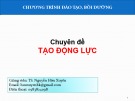
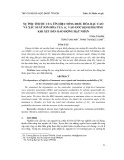
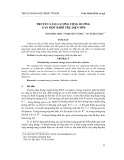
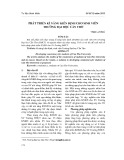

![Sự khác biệt tư duy người giàu và người nghèo: 17 bức ảnh [Phân tích chi tiết]](https://cdn.tailieu.vn/images/document/thumbnail/2015/20150731/thanhtuan01232853658/135x160/1765684_3610.jpg)

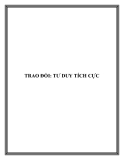






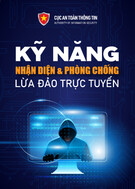
![Ebook kỹ năng phòng, chống ma túy cho học sinh trung học phổ thông [PDF]](https://cdn.tailieu.vn/images/document/thumbnail/2025/20251113/nganga_00/135x160/34671763063784.jpg)
